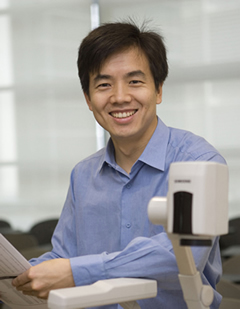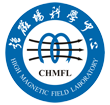报告人:熊启华 助理教授
(Nanyang Technological University,Singapore)
报告地点:强磁场中心磁体研制楼201会议室
报告时间:1月6日下午2:00 (星期一)
邀请人: 田明亮 研究员
 Biography: Qihua Xiong received his B.S. degree in physics from Wuhan University in 1997, and then finished three years graduate studies at Shanghai Institute of Applied Physics, Chinese Academy of Sciences. He went to the United States in 2000 and received a Ph.D. degree under the supervision of Prof. Peter C. Eklund from The Pennsylvania State University in 2006. After three years postdoctoral experience in Prof. Charles M. Lieber’s group at Harvard University, he joined Nanyang Technological University as an assistant professor in 2009. He is a Fellow of Singapore National Research Foundation awarded in 2009. Prof. Xiong’s research focuses electrical and optical properties of semiconductor nanomaterials. He recently ventured into the field of 2D layered materials and laser cooling of semiconductors.
Biography: Qihua Xiong received his B.S. degree in physics from Wuhan University in 1997, and then finished three years graduate studies at Shanghai Institute of Applied Physics, Chinese Academy of Sciences. He went to the United States in 2000 and received a Ph.D. degree under the supervision of Prof. Peter C. Eklund from The Pennsylvania State University in 2006. After three years postdoctoral experience in Prof. Charles M. Lieber’s group at Harvard University, he joined Nanyang Technological University as an assistant professor in 2009. He is a Fellow of Singapore National Research Foundation awarded in 2009. Prof. Xiong’s research focuses electrical and optical properties of semiconductor nanomaterials. He recently ventured into the field of 2D layered materials and laser cooling of semiconductors.
Email: Qihua@ntu.edu.sg.
Laser Cooling of Semiconductors
Abstract: Optical irradiation accompanied by spontaneous anti-Stokes emission can lead to cooling of matter, a phenomenon known as laser cooling or optical refrigeration proposed in 1929 by Peter Pringsheim. In solid state materials, the cooling is achieved by annihilation of lattice vibrations (i.e., phonons). Since the first experimental demonstration in rare-earth doped glasses, considerable progress has been made particularly in ytterbium-doped glasses or crystals with a recent record of ~110 K cooling from ambient, surpassing the thermoelectric Peltier cooler. On the other hand, it would be more tantalizing to realize laser cooling in direct band-gap semiconductors. Semiconductors exhibit more efficient pump light absorption, much lower achievable cooling temperature and direct integrability into electronic and photonic devices. However, so far no net-cooling in semiconductors has been achieved despite of many experimental and theoretical effortsin the past few decades. In this presentation, we demonstrate the first net laser cooling in semiconductors using cadmium sulfide (CdS) nanobelt facilitated by multiple longitudinal optical phonon assisted upconversion due to strong and enhanced Fröhlich interactions. Under a low power excitation, we have achieved a ~40 K and ~20 K net cooling in CdSnanobelts starting from 290 K pumped by 514 nm and 532 nm lasers, respectively. Our findings suggest alternative II-VI semiconductors for laser cooling and may find promising applications in the field of cryogenics with the advantage of compactness, vibration- and cryogen-free, high reliability and direct integrability into nanoscale electronic and photonic devices. At last, our progress in bulk crystal synthesis will be discussed within the context of realizing scalable devices for optical refrigeration applications.
© 1996 - 强磁场科学中心 版权所有 皖ICP备05001008号-11
地址:安徽省合肥市蜀山湖路350号 邮编:230031 电话:0551-65591149 传真:0551-65591149 邮箱:chmfl@hmfl.ac.cn


